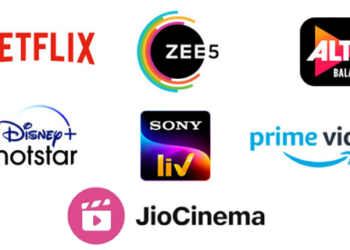Mumbai: The 2024 Ficci EY report has noted that broadcast rights for films will remain soft as pay TV homes continue to fall, But the gap will be made up through digital rights, as CTV homes are expected to grow significantly
Broadcast rights were impacted by lower monetisation on film channels:
Film viewership remains a very important part of television; film channels generated 26% of total TV viewership in 2023, up from 25% in 2022
- However, monetising films was a challenge in 2023 due to fragmentation of audiences which, according to several industry sources, led to lower ratings per new movie
- Several film channels experimented with simultaneous release of TV premieres on multiple movie and/ or GEC channels, by increasing marketing spends and increased interactivity
- The number of films shown on television also experienced a 4% decline in 2023 compared to 2022, led by international films (-9%) and Hindi language films (-6%)
- Consequently, broadcast rights grew just 9% in 2023
Create discrete films for the broadcast market:
Broadcast rights will remain muted as they have become a distant third window after theatrical and digital releases. Further, films viewership will be determined by content type, and will not grow until film content is created for the masses as against the classes. In effect, content that appeals to multiplex and OTT audiences will be different than content that appeals to single-screen and television audiences
- Hence, the report expects that a separate set of films may be commissioned for Tier-III markets and television audiences, including FTA audiences, with separate themes and lower price points
- At the other end, tent pole films will continue to be produced but will be released on a wider swath of TV channels, with staggered windows and pricing options
Digital rights rationalised their direct release premiums:
- As OTT platforms focus on profitability, they will continue to invest in tentpole properties, but fewer than before, and reduce investments in mid-range films. Over 400 films released on digital platforms in 2023, a growth of 30% over 2022
- The number of direct to digital releases almost halved from 105 in 2022 to just 57 in 2023 as platforms rationalised their direct to digital premiums
- While digital rights volumes increased a healthy 30%, the average spend per film came down as platforms focused on tent pole properties and lower cost properties, but reduced focus on mid-range content, resulting in a relatively muted 8% increase in digital rights values over 2022
- The subscription model is expected to remain a key driver of growth for OTT platforms, propelling the expansion of this rapidly evolving market, and hence the demand for digital rights is expected to remain robust in the near future
Build D2C relationships:
The total TVod opportunity on digital platforms is estimated by the report at approaching $0.5 billion by 2024 end, a portion of which relates to films
- The acceptance of the “sachet model” by the middle classes across a range of different impulse purchases will result in the growth of pay-per-view and pay-per-download film experiences, across rural and urban markets
- Overall the film segment will continue to grow, driven by theatrical revenues as Hindi movies go mass market in their storytelling, incorporate more VFX to enhance the movie-going experience and expand more aggressively into tier-II and III cities. Growth in overseas revenues will depend on opening-up of culturally similar markets like China and the middle east.
The Film Industry Will focus On Mass Escapism:
If we take away anything from 2023, it is that mass escapism is what works across audience classes
- 80% of production houses we surveyed expected to see an increase in formula-based films with more ‘masala’ content, given the successes of 2023. The focus on AVOD will also necessitate that the segment focusses more on mass content
- It expects that more mass content will be created to attract wider audiences and propel increased footfalls beyond the current 0.9 billion admissions, mainly in non-multi-plex screens
- The average number of VFX shots per large scale films has increased significantly, and we expect more VFX to become the norm in films that aim for theatrical releases
Segment Theatrical Experiences:
The report said that it expects the theatre-going audience size to increase as India’s affluence increases: the estimates of per capita income increasing from $2,500 in 2022 to $3,000 by 20257 are an indicator supporting the above hypothesis
- Investments will increase in cinema infrastructure by way of affordable “janta cinemas” (a level between the multi-plex and the single screen) where middle and upper middle classes can feel comfortable in enjoying an evening out with their families
- As part of the smart city initiatives having intelligent transportation networks to save time and reduce parking struggles, there will be a surge in the construction of modern cinema complexes. This symbiotic relationship between smart city initiatives and a thriving cinematic landscape would grow footfalls
- Bridging the gap between travel and entertainment, exploring the potential of 24/7 cinemas at transport hubs like airports and railway/ bus stations, hospitals, business districts, and large housing colonies/ gated communities, can be explored
Develop Talent:
- The report’s survey of production houses indicated that the biggest issue being faced was the shortage of quality writing and directing
- The film industry needs to develop the required talent through funding writers’ rooms, crowdsourcing stories and sourcing directors from smaller towns and not just metros.
Innovate around pricing: The report noted that for multiplexes exploring innovative pricing strategies – especially in Tier II and III cities – such as introducing loyalty passes, group passes, or bundled offerings including food and beverages, and merchandise, will be undertaken as pilot initiatives to assess their effectiveness in driving footfalls and consequently, revenue growth

















